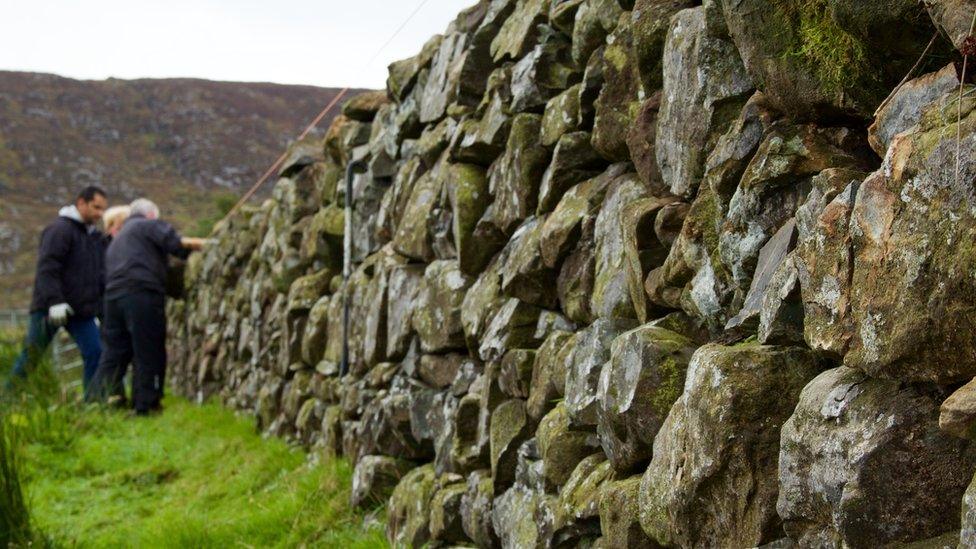Mourne Wall: Stonemasons battle elements in restoration work
- Published
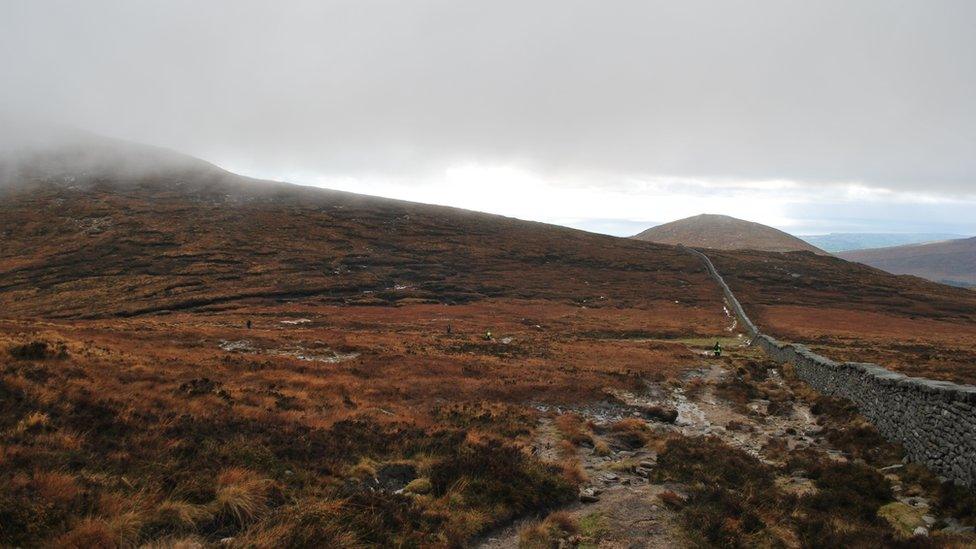
The Mourne Wall is one of Northern Ireland's best-known landmarks
Where the mountains of Mourne sweep down to the sea, that's where you will find Northern Ireland's longest listed building - the Mourne Wall.
Why it was listed as a building rather than a monument remains a mystery.
But what is certain is that the 22-mile (35km) structure, which runs across 15 peaks, had fallen into disrepair due to exposure to the elements and lightning strikes.
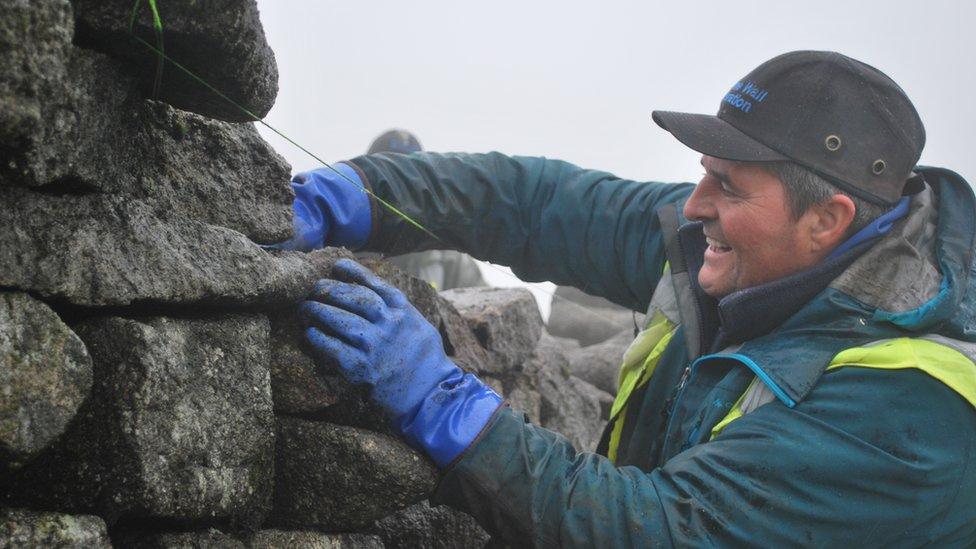
Norman McComb is one of the stonemasons who has been working on the wall
Over the past 16 months that has all changed as the wall has been restored by a team of County Down stonemasons.
Norman McComb, Martin Stevenson and brothers Brian and Andrew Rooney have collectively clocked up thousands of hours repairing the dry-stone wall.
"I would've come up here to walk now and again," says Martin.
NI Water's Michael Donnelly explains the history behind the Mourne Wall
"But I never thought I'd be up the mountains as much as I have been this last while."
Taking on the elements
Rain, hail or shine, the men hike about five miles (8km) to various points along the landmark, while carrying sledgehammers and scaffolding planks.
"The conditions can be tricky to work in and, depending on the season, it can be unpleasant at times," explains Andrew.

The wall has a personal connection to the men as some of their relatives worked on the original construction
"But even in the winter, as long as it's not too cold, we can still work it.
"I guess we're getting used to it."
The wall is on average about five to six feet in height, with a base width of three feet.
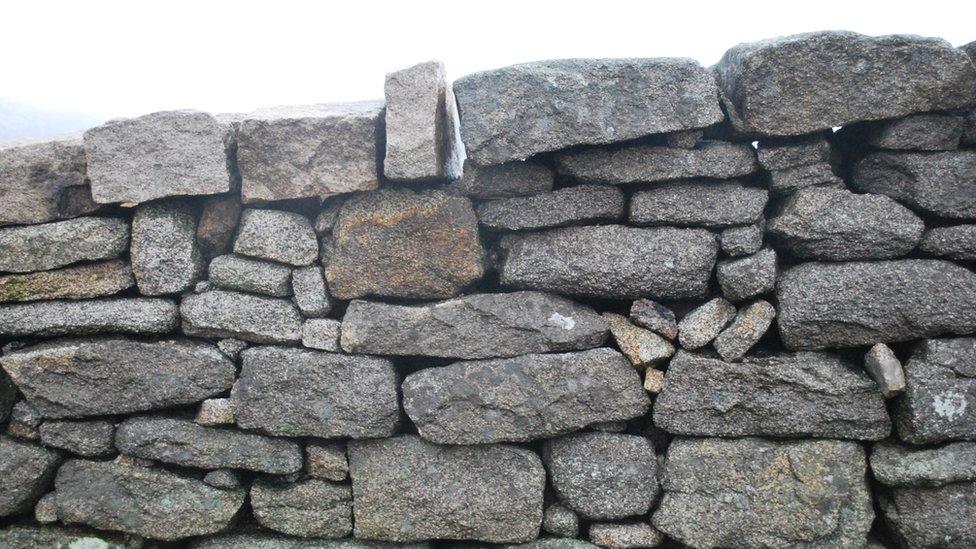
Restored parts of the wall can be easily identified as the new stone is a lighter colour than the original
Andrew says he and the team have used traditional methods to give the wall a seamless finish.
"We start by tying string around the capping stones that haven't fallen," he said.
"That gives us a clear line of where we need to fill the gap up to and it makes the wall nice and level.
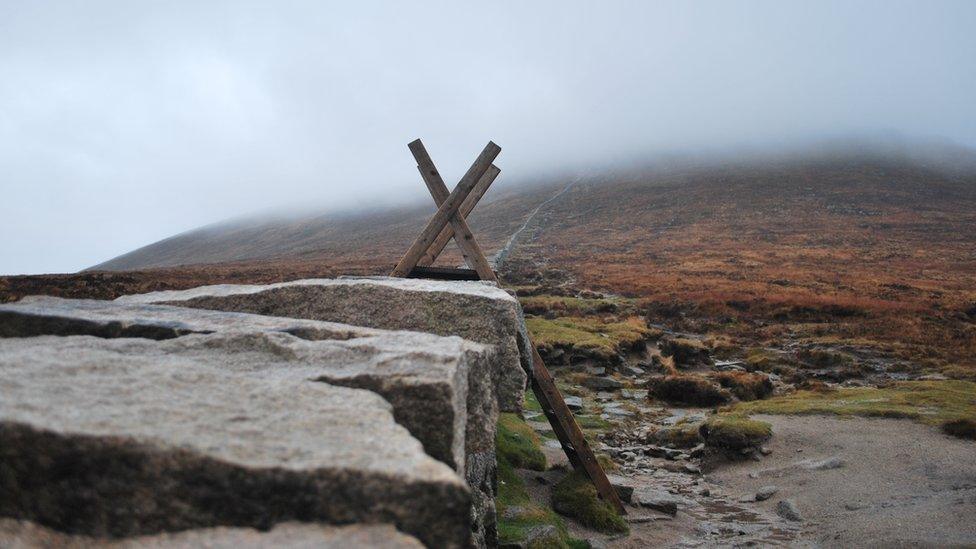
The wall stretches for 22 miles across 15 mountain peaks
"It's wider at the bottom and draws in at the top and we fill between the outer walls with smaller 'heartening' stone."
To the untrained eye, stonemasonry can seem quite haphazard but it is a highly skilled trade.
"We lift stones from what's beside us here on the mountain," says Andrew.
"Then we'll look at it and if we need to hammer it or chip bits off it we will.
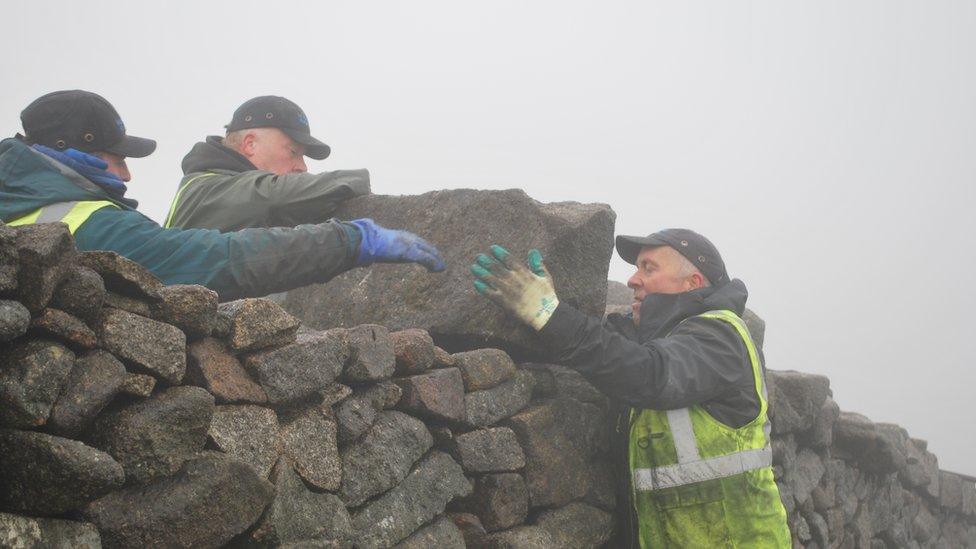
The work is physically demanding but the men are careful to lift heavy stones
"But after a while you get an eye for it and soon enough you'll spot a perfect fit."
A family affair
While the men take great pride in their work, the restoration project holds even greater significance for them.
"We're the fifth generation of stonemasons in our family," says Andrew.
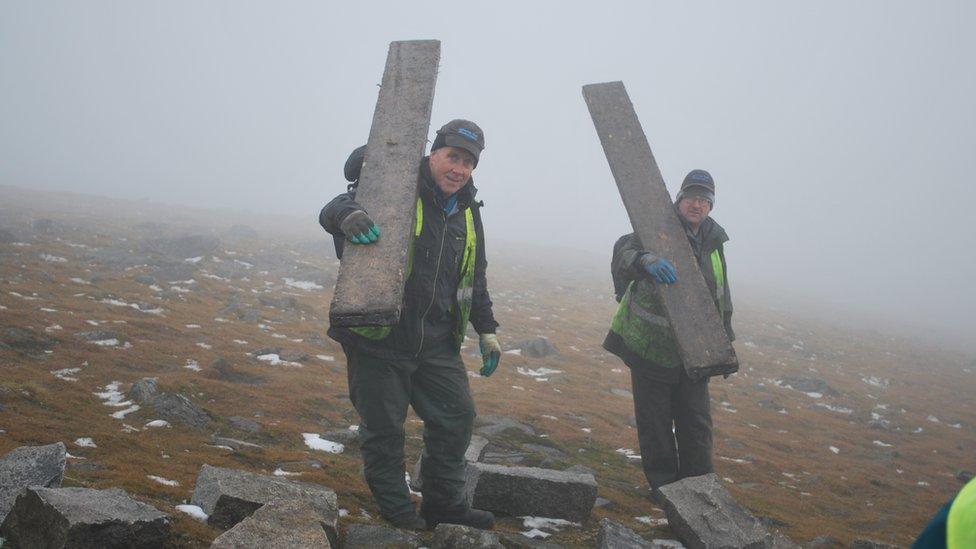
When their work is done Andrew Rooney and Martin Stevenson carry scaffolding planks down from the summit of Slieve Donard
"A lot of local people were involved in the original build - relations of our own and all, even our grandfather.
"So it's great to be up here and to be part of a wee bit of history like - it's a privilege to do it."
Surveying the wall
In 1904 construction started on the wall, which was built to keep cattle from contaminating the water supply as there was no filtration process.
That has all changed, of course, and the site is now owned by Northern Ireland Water.
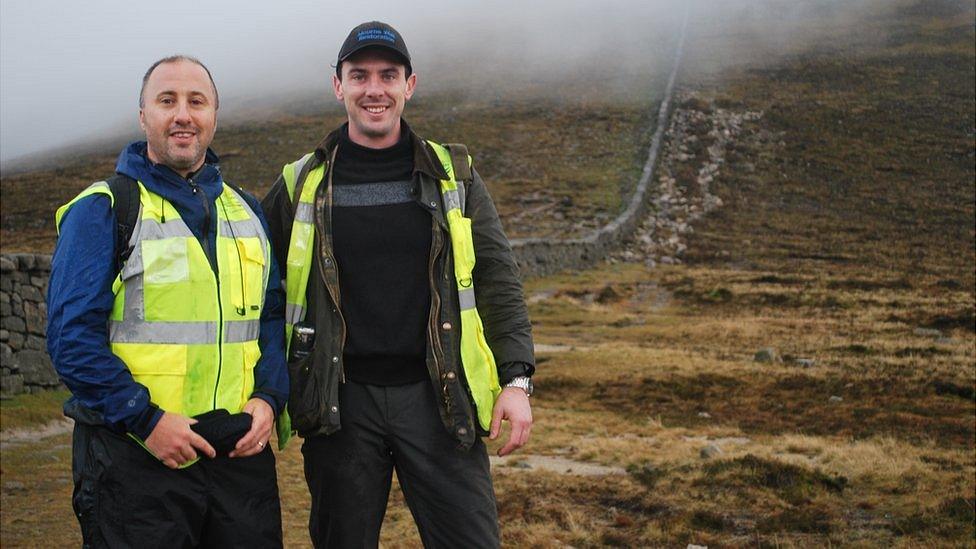
Michael Donnelly and Niall McGovern have been involved in surveying the wall
At the start of the repair work, survey teams from the water services company identified about 500 problem spots along the wall.
Michael Donnelly was part of that process.
"After we did our initial surveys, we had four miles (6.4km) of missing wall," he says.
"Most people think the Mourne Wall is just the perimeter, which is about 18 miles (29km), but we actually found four miles of internal wall.
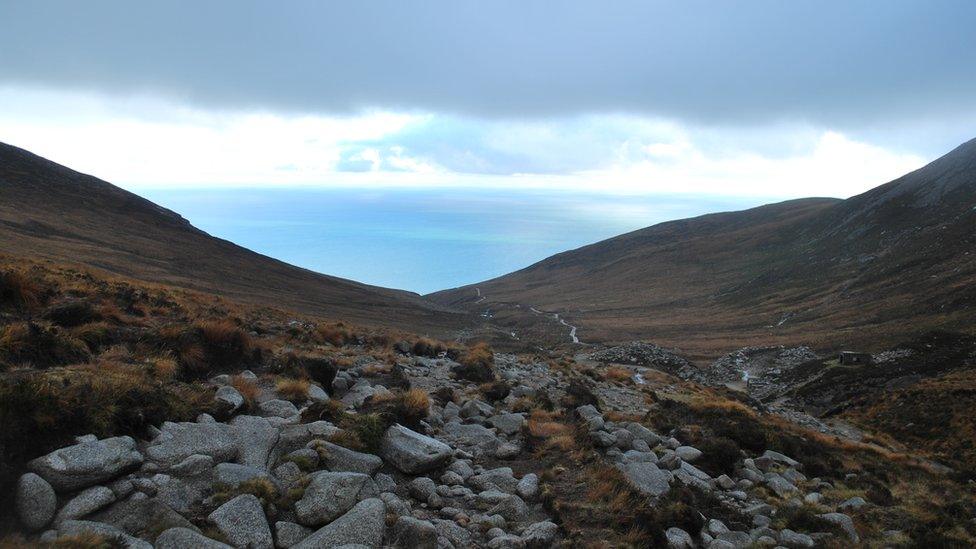
Every working day the stonemasons can walk up to five miles to parts of the wall that need repaired
"It's all done by physical measurement - things like geo-tagging, photographs and up-close personal assessment.
"Every single step has to be walked."
While the immediate goal is to repair the wall, the longer aim is to preserve it from further erosion.
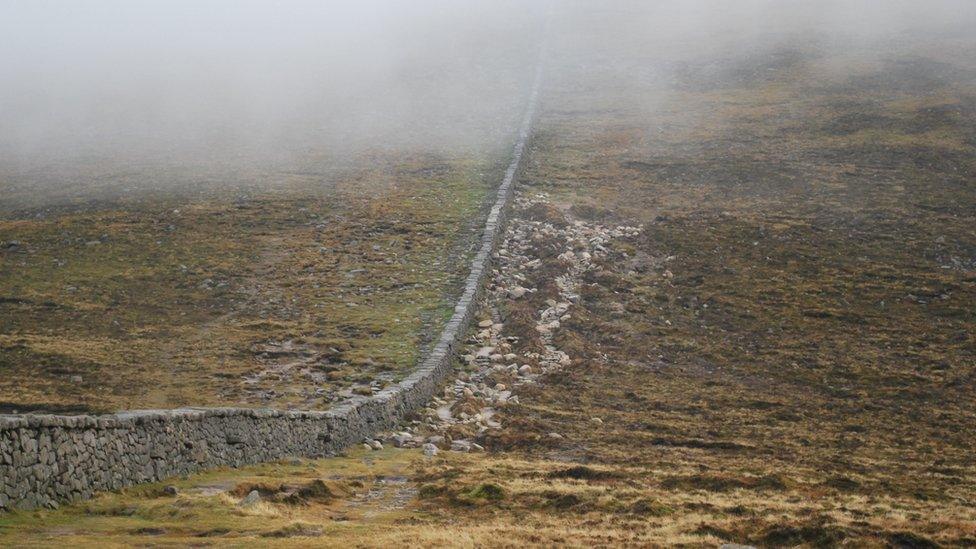
New paths have been made in keeping with the natural surroundings to help maintain the wall
"As engineers we like things to be clinical but we've had to adapt experimental techniques," says Michael.
"At certain points we've created rock paths in keeping with the natural flow of the land, to redirect walkers about five or 10 metres away from the wall.
"They're not doing anything wrong but many people hold on to [the wall] while they climb - years of wear and tear do take their toll.
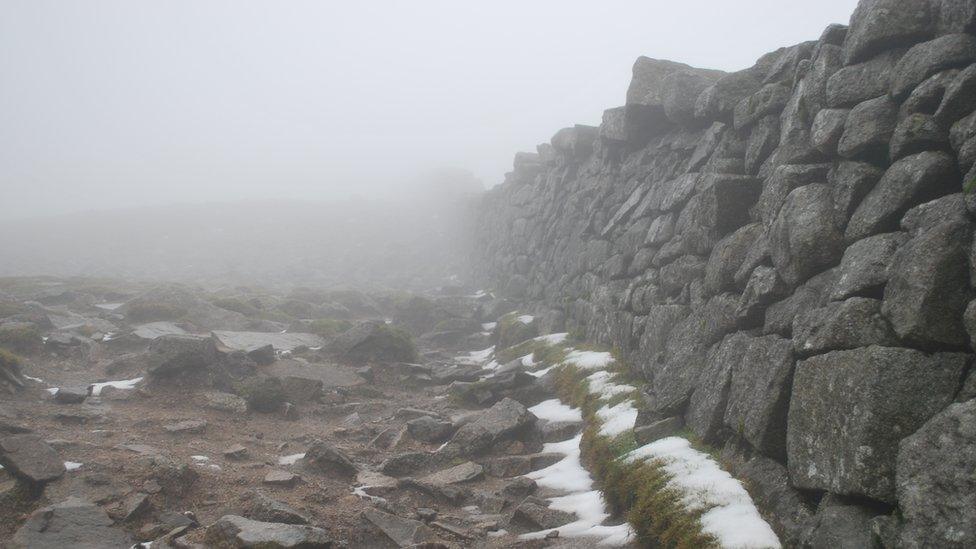
Seasonal weather changes bring difficulties when trying to complete the restoration work
"It's not an exact science but it's a combination of engineering, artwork and psychology."
The wintery weather conditions mean the Mourne stonemasons have put their tools down until the spring.
But according to contract manager Niall McGovern, a watchful eye will remain over the wall.
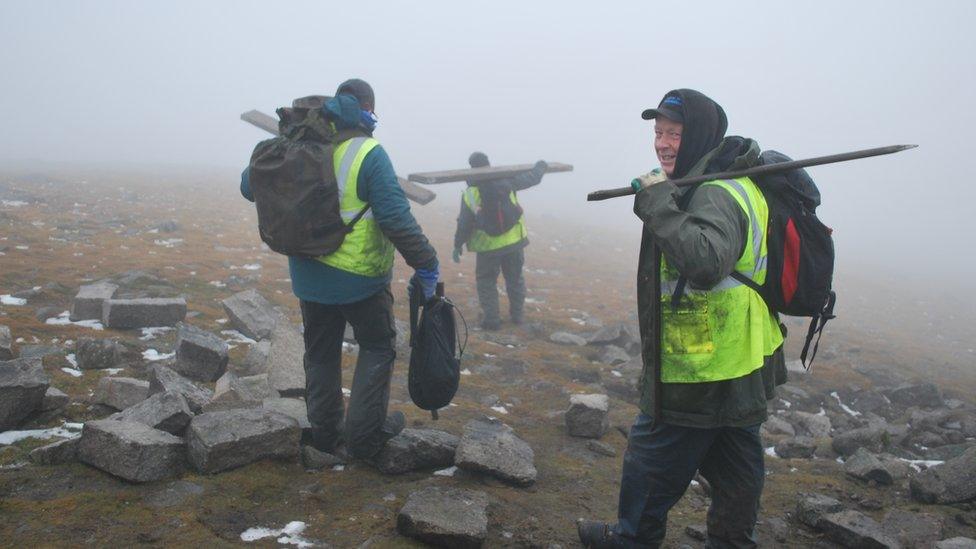
The stonemasons will return to the mountains in spring
"We have to walk it again, even once the work is finished," he says, "just to make sure that when the work settles that everything is fine and that nothing has been missed."
"Yeah, it's only the hardy survey team that go up the mountain at this time of year," jokes Michael.
"We might need to reassess that!" laughs Niall.
- Published28 October 2018

- Published21 February 2018
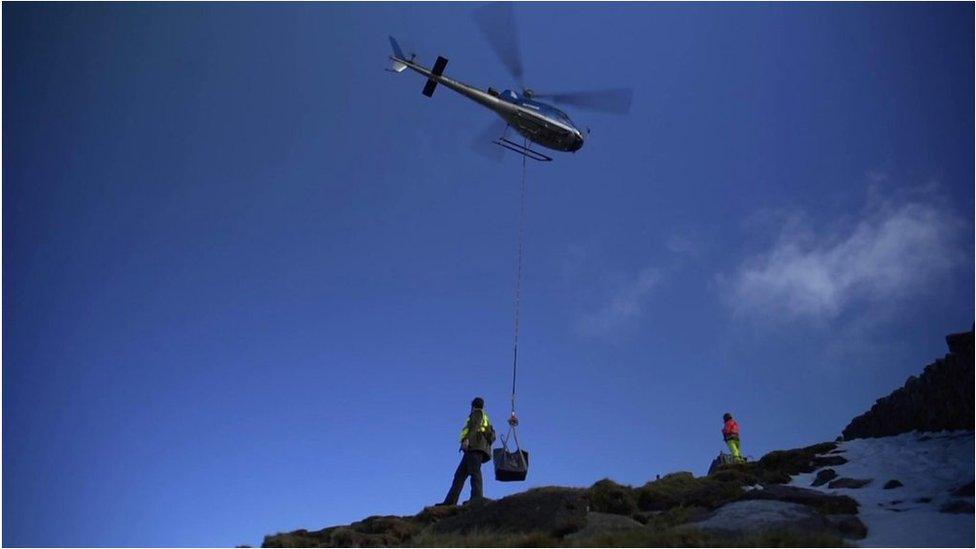
- Published19 May 2017

- Published30 October 2015
